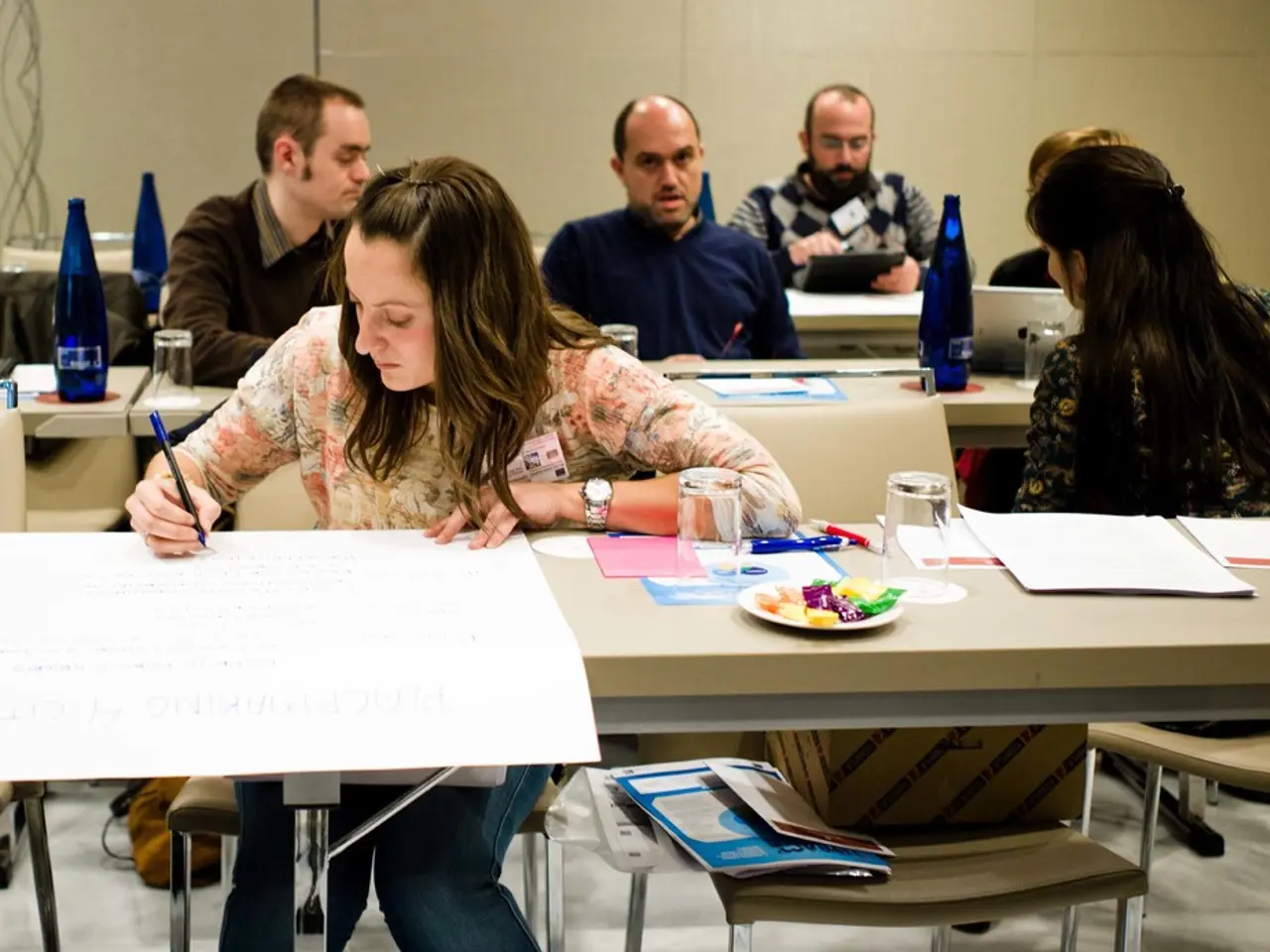Training Strategies for Optimized Workforce Advancement
In today's fast-paced business environment, the importance of employee development cannot be overstated. By fostering a culture of continuous learning and improvement, organizations can ensure their workforce is equipped with the necessary knowledge, skills, and competencies to meet evolving challenges and drive growth.
Prioritizing Professional Growth and Autonomy
Offering workplace-based development programs and professional growth opportunities is key to engaging employees and boosting retention. By supporting career goals and empowering employees through autonomy in decision-making and project management, organizations can foster leadership and innovation.
Customization and Multimodal Learning
A personalized learning approach, combining eLearning, workshops, on-the-job training, and mentoring, is essential for catering to individual needs. Digital badging systems can validate skills and celebrate achievements, enhancing motivation and knowledge retention.
Integrating Learning into Workflow
Incorporating learning into daily work via methods like job rotation, self-learning time, and policies such as Google’s 20% time, enables employees to dedicate part of their workweek to personal projects, fostering creativity and innovation.
Mentorship and Coaching
Establishing structured mentorship and coaching programs provides guidance, support, and networking opportunities. These programs help employees navigate challenges and grow their skills effectively.
Internal Mobility
Developing internal mobility pathways allows employees to explore different roles and departments, increasing engagement, reducing hiring costs, and demonstrating career growth potential within the organization.
Real-time Recognition
Implementing digital tools for immediate recognition of employee contributions reinforces positive behaviours and maintains high motivation levels.
Challenging Assignments
Assigning tough projects helps employees build skills, confidence, and leadership potential while identifying strengths and areas for growth.
Supporting Resources
Budgeting for education, providing access to training and certification, career development discussion frameworks, pulse surveys for engagement monitoring, and technology-enabled learning management systems are all valuable resources that support these strategies.
These combined strategies create a culture of continuous learning and improvement, aligning employee development with organizational goals and adapting to diverse learning styles and needs.
Employee Development Plans
The formal creation of an employee development plan may result from these initiatives, providing a roadmap for an employee's professional growth.
Researching Relevant Training Topics
To ensure employee development initiatives are helpful and relevant, it's essential to research and identify valuable training topics. Soft skills like goal-setting, communication, and collaboration are generally the top areas for professional development across any role.
Recognition and Reward
Recognizing and rewarding employees' progress encourages them to continue striving for growth and supports them along their professional development journey.
Video-based Learning and Onboarding
Video-based learning can enhance the employee development strategy due to its stimulating, memorable, and straightforward nature. A good onboarding experience is key for employee development, and video-based learning can provide a comprehensive introduction to the organization and its culture.
In conclusion, by prioritizing employee development and implementing innovative strategies, organizations can foster a culture of continuous learning and improvement, ensuring their workforce is well-equipped to meet the challenges of the future.
Data visualization and brand kits can be included in a comprehensive learning and development plan for employees, supporting the goal of continuous improvement and growth. For instance, using data visualization tools can help employees better understand complex information, while a brand kit can ensure consistency in the way the organization is presented – both key to education and self-development.
As part of the commitment to supportive learning environments, incorporating multimodal learning methods such as eLearning, workshops, mentoring, and job rotation fosters personal growth and enhances knowledge retention for employees. This integrated approach aligns with the overall goal of facilitating learning and growth for employees within the organization.




